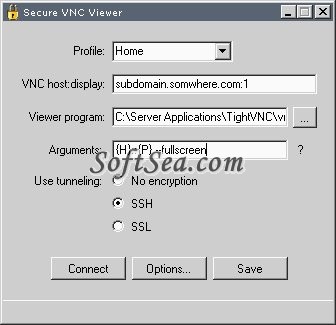
- #WEBBASED VNC VIEWER HOW TO#
- #WEBBASED VNC VIEWER INSTALL#
- #WEBBASED VNC VIEWER SOFTWARE#
- #WEBBASED VNC VIEWER CODE#
- #WEBBASED VNC VIEWER PASSWORD#
Once the package group is installed, reboot the server: sudo reboot Our VNC users will use GNOME to interact with the server from its desktop: sudo yum groupinstall -y "GNOME Desktop"ĭepending on the speed of your network, this can take a few minutes. There are other desktop environments like KDE, but GNOME is more popular.
#WEBBASED VNC VIEWER SOFTWARE#
GNOME is a collaborative effort: it’s a collection of free and open source software that makes up a very popular desktop environment.
#WEBBASED VNC VIEWER PASSWORD#
Set the password for janevnc: sudo passwd janevnc Next, create an account for janevnc: sudo useradd -c "User Jane Configured for VNC Access" janevnc Passwd: all authentication tokens updated successfully. Once supplied, the account will be ready for login: Changing password for user joevnc. Then run the passwd command to change joevnc’s password: sudo passwd joevnc Run the following command to add a user account for joevnc: sudo useradd -c "User Joe Configured for VNC Access" joevnc These accounts will remotely connect to our CentOS 7 server from VNC clients. Step 1 - Creating Two User Accountsįirst, we will create two user accounts. This could result in security issues and downtime. Warning: You should not run any commands, queries, or configurations from this tutorial on a production Linux server. To understand how sudo privileges work, you can refer to this DigitalOcean tutorial

#WEBBASED VNC VIEWER HOW TO#
We will then test their connectivity to the remote desktop, and finally, learn how to secure the remote connection through an SSH tunnel. We will create two user accounts and configure VNC access for them.
#WEBBASED VNC VIEWER INSTALL#
To demonstrate how VNC works, we will also install the GNOME desktop on your CentOS server. We will install the TigerVNC server which is freely available from the TigerVNC GitHub repository. In this tutorial we will learn how to install and configure a VNC server on CentOS 7. Like everything else in the networking world, VNC is based on the client server model: VNC server runs on a remote computer - your Droplet - which serves incoming client requests. If you come from a Microsoft Windows server background, VNC is much like the Remote Desktop Service, except it’s also available for OS X, Linux, and other operating systems. VNC also allows clipboard sharing between both computers. It’s like remote controlling an application: the client computer’s keystrokes or mouse clicks are transmitted over the network to the remote computer. Or you could just use existing remote clients.VNC or Virtual Network Computing is a platform-independent protocol that enables users to connect to a remote computer system and use its resources from a Graphical User Interface (GUI). Then you have this vnc project that seems to provide a browser based client side and talks with vnc installed server side.
#WEBBASED VNC VIEWER CODE#
on the client side you'll need to write code to receive and show the remote display and collect keyboard and mouse events to send them back to the server sideĪs you can see it might take some time to have something like this up and running. It will also receive client side events such as mouse or keyboard events so that you can control the server side app to have a server side sofware that will grab what is shown on the server side to send back those frames to the client side. But you need to write the program and install the app on the remote PC.Īnd so you don't want to reuse this project ? Basically if you are really looking at doing something from scratch you'll basically need : The device has a web server, like a PC, you can install a web app that provides control to whatever you like on that PC. You could configure your router to forward messages over a certain port (port forwarding) to send the device a GET or POST HTTP messages using the browser but that's about it.

To a remote machine but you need to know how to get to the remote machine and the remote machine needs to be listening for requests.įor example, if you had a gadget connected to your home network. Browsers communicate with a web application end point using HTTP over a TCP connection. I'm not asking for code, just for pointers, where to start.Īs far as I know, it is not possible without a browser plugin (not sure if a plugin will even work) or installing software. If we look away from noVNC (and from websockets, I probably misunderstood the usage or got some mixed information from the Internet) for a while - what could be the possible way to show and control another computer's desktop from browser (from ASP.NET application)?


 0 kommentar(er)
0 kommentar(er)
